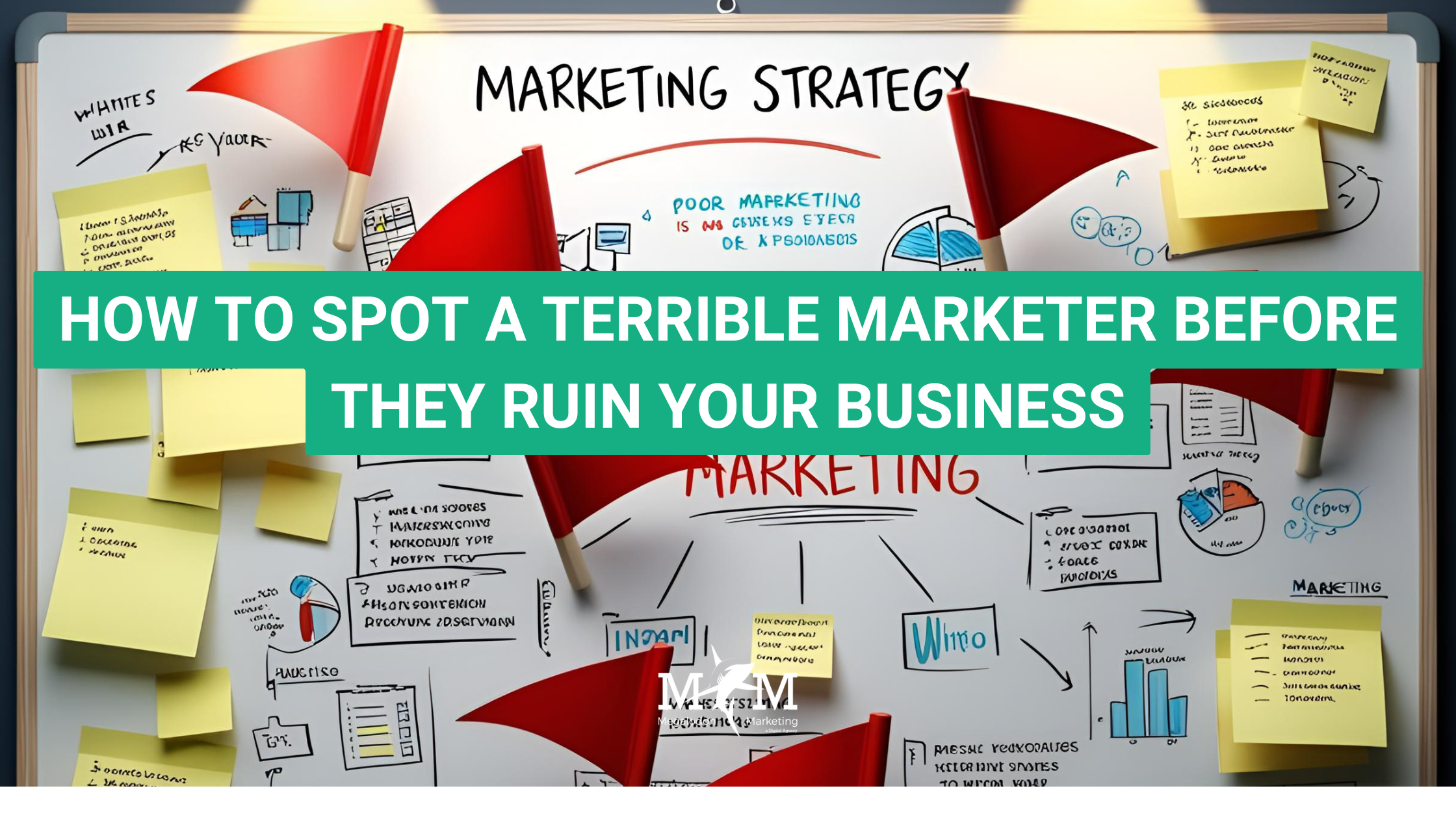I hope you enjoy reading this blog post. If you want my team to just do your marketing for you, click here.

I hope you enjoy reading this blog post. If you want my team to just do your marketing for you, click here.
Author: Jeremy Haynes | founder of Megalodon Marketing.

Earnings Disclaimer: You have a .1% probability of hitting million dollar months according to the US Bureau of Labor Statistics. As stated by law, we can not and do not make any guarantees about your own ability to get results or earn any money with our ideas, information, programs or strategies. We don’t know you and, besides, your results in life are up to you. We’re here to help by giving you our greatest strategies to move you forward, faster. However, nothing on this page or any of our websites or emails is a promise or guarantee of future earnings. Any financial numbers referenced here, or on any of our sites or emails, are simply estimates or projections or past results, and should not be considered exact, actual or as a promise of potential earnings – all numbers are illustrative only.
Watch the full video breakdown on this topic here.
On the journey to achieving ever-higher monthly revenue numbers—whether you’re aiming for six figures, multiple six figures, or scaling toward those fabled million-dollar months—one key factor will often determine if you stay stuck or break through: the quality of the marketer supporting your business. It’s not just about an in-house employee or an outsourced agency; it’s about whether the person leading your advertising, funnel builds, and overall marketing strategy actually knows what they’re doing.
A marketer with the right approach can, quite literally, double or triple your monthly revenue from one month to the next if all the foundational pieces are in place. The wrong marketer, meanwhile, can lead you to wasted ad spend, confused leads, and stagnation in the low six-figure range with zero growth in sight.
I’ve witnessed this firsthand. Sometimes, you have a marketer who is absolutely certain that they “just know” what to do, yet they’re making serious fundamental errors—errors that cause your funnel or your entire acquisition system to break down. By the time you realize it, you’ve lost potential revenue, momentum, and precious time.
We’re going to dissect exactly how to recognize these warning signs so that you can shield your business from the damage that shoddy marketing can bring.
A perfect illustration of a marketer’s impact comes from someone I’ve worked with in my circles. This business owner had been hovering around $100k per month in revenue—occasionally hitting $140k, but mostly stuck near $100k. His marketing was handled by a particular individual who seemed capable at a glance, but the owner began to suspect that the marketer was actually holding them back.
Even though I wanted more time to evaluate, the business owner quickly fired that marketer and brought in a new marketing agency from my network. Practically overnight, everything that had been going wrong reversed course. The quality of leads, the frame of incoming prospects, the call volume, and the daily revenue numbers all improved so rapidly that by the end of just one month, the business had soared to $300k, doubling and then surpassing their old highs.
That snapshot is the essence of why an elite marketer vs. a mediocre or downright terrible marketer is so critical. Marketing can feel intangible: you don’t always know which changes are going to fix your funnel or what’s causing your entire system to stall. But once you get the right person who truly understands the entire ecosystem—from proper event optimization to advanced machine learning strategies—the results can be immediate and dramatic.
Revenue plateaus happen, but long-term stuck points—like being unable to get past $100k or $300k months for half a year or more—are often a symptom of something truly broken under the hood. When your revenue simply refuses to budge for months, despite your best efforts, it may be a signal that your marketing operations are built on the wrong assumptions.
The difference between a strong marketer and a sh*t marketer becomes obvious when a new expert comes in and delivers immediate forward momentum. If you’re noticing that your monthly numbers aren’t budging, or they’re creeping upward by tiny amounts but never breaking through to the next level, it’s time to look at your marketer.
One of the biggest giveaways that your marketer might be lacking is in the details of how they set up and optimize your funnel. Let’s take the example of a call funnel:
In many setups, unqualified people (those who fail certain application criteria) should go to a different page that doesn’t trigger your main “good lead” event back to the ad platform. But what if your marketer simply lumps everybody—unqualified and qualified—together on the same path and sends them all back as a positive conversion? This not only pollutes your pixel data, it teaches the ad platform to bring you even more unqualified leads.
When I took over one specific account in this situation, the old marketer had been getting a $76 cost per application, mixing unqualified and qualified leads into the same custom conversion. By pivoting to focus only on qualified scheduled calls—meaning the event fired only when someone finished the application and scheduled—I drove $56 cost per qualified booked call right out of the gate. This wasn’t a watered-down qualification; it was a 12-step application for a real call funnel. We saved money, got more qualified people, and drastically improved the business’s revenue within weeks.
Many marketers either don’t know or forget the principle of pixel conditioning. To keep it simple: whatever your ad platform sees as “the result” is what it will aggressively try to replicate. If you keep feeding back low-quality or incomplete signals, your entire campaign becomes a magnet for more unqualified traffic.
Remember, ad platforms have standard events, like Submit Application, Schedule, Purchase, Initiate Checkout, etc. These events aren’t random. They’re recognized across millions of advertisers, meaning there’s a massive pool of data behind them. While custom conversions can be powerful if done right, they’re limited by the data you feed them. In other words, you’re relying solely on your own business’s leads and conversions, rather than tapping into the entire global data that standard events draw from.
If your marketer is only using custom conversions for an “application,” lumps all applicants together, or picks a standard event at the top of the funnel, they’re stunting your results.
In modern advertising, machine learning is the driving force behind campaign performance on platforms like Facebook and Instagram. Sadly, many marketers never take time to understand the mechanics behind it. They do outdated “tricks,” create 20 different ad sets with near-duplicate targeting, or fail to unify their creatives. This approach may have worked in 2017, but at scale, it’s a surefire way to stay stuck.
Facebook has published (and periodically updates) best-practice guidelines known formerly as the Power 5, now updated to the Performance 5. The first principle is account simplification—fewer campaigns, fewer ad sets, more consolidated data. The machine learning model behind your ad account will thank you for it.
Another best practice from the Performance 5 is dynamic creative. This feature lets you upload multiple variations of headlines, body text, videos, and images into a single ad. The algorithm will then dynamically show the best combination to individual users, based on more data than any human could replicate in real time.
When you set up your campaigns with proper account simplification and dynamic creative, you tend to see consistent performance for a longer stretch of time. Eventually, everything hits a point of diminishing returns (often called “ad fatigue”). That’s normal. At that point, you relaunch an entire new campaign to refresh the machine learning model. You do not simply keep duplicating ad sets infinitely or toggling on new ads inside an old cluster.
Let’s illustrate a real situation: I once looked into an account that had one campaign with 2,017 ad sets inside it. Each ad set had a bunch of static ads, some turned on, some off, each in different phases of testing. This approach is beyond chaotic and goes directly against the machine learning best practices recommended by the platform’s own engineers.
People do it because they saw success in very old versions of Facebook ads where you could scale by duplicating a winning ad set 20 times at $100 each. That method does not hold up when you want to do serious revenue. It’s a prime sign of an outdated approach that leads you to stall at $100k–$300k months (or less).
You want a marketer who understands that the ad platform thrives on simplicity, broad data, and dynamic distribution. If the person you’re hiring is preaching complicated setups, infinite duplications, or dogmatic audience breakdowns, that’s a red flag.
A great marketer is proactive, pushing for best practices and seeing the entire pipeline as an ecosystem. Marketing does not exist in a vacuum. In a sales-based business—where you’re booking calls and closing deals—pre-frame and qualification matter as much as ad click-through rates or cost per lead.
Sometimes, marketing performance issues overlap with sales performance. For instance, if your show rate is 60% and you need it to be 80%, the fix might be partially on marketing and partially on sales.
A bad marketer washes their hands of any blame and insists “I did my part.” A great marketer says, “Here’s exactly what I can tweak and what you, on the sales side, should do to maximize show rates.” When you see a marketer who never volunteers solutions outside their tiny sliver of responsibility, that’s another sign they may be out of their depth.
You’ll often notice that marketers who struggle to scale fixate on “perfect” metrics at tiny ad spends. For example, let’s say you’re turning $1,000 of ad spend into $25,000 in revenue—a 25x ROAS—on a micro budget. The moment you push spend to $2,500 a day, your ROAS might go down to 19x. Is that a problem?
Not if you’re still profitably generating a giant return. Real marketers who care about revenue growth will push you to scale. There’s a huge difference between being comfortable with a slightly lower but still robust ROAS when you’re ramping up versus pulling back any time your results dip even marginally.
A “dog” marketer sometimes tries to maintain that artificially high return on minuscule spending levels, rather than generate a greater net profit for your business. They might split-test themselves into oblivion, never taking advantage of the fact that the real gold is in consistent scaling and reinvestment.
An experienced marketer will financial model your business to show how you can maintain healthy margins while scaling your ad spend month after month. If you’re bringing in significant profits, the typical conversation goes like this:
For example, maybe you decide that out of $200k net profit in a month, you’ll keep $100k and roll $100k back into ads to accelerate the next month’s growth. A subpar marketer won’t even think to have this conversation, and will simply guess at how much to spend, leading to frustration and unpredictability.
A high-level marketer will articulate:
This kind of planning is essential for companies on the path to half a million or a million dollars a month in revenue.
If, while reading this, you realize you’ve been oblivious to these crucial points, you’re not alone. Far too many business owners hand off marketing to a “specialist” and hope for the best. Then, when performance tanks or remains stuck, they feel helpless because they don’t know how to identify the problem.
Your best solution? Educate yourself. You don’t have to become the hands-on media buyer, but you do need to understand the mechanics of event optimization, funnel design, machine learning best practices, and how to scale. Otherwise, you can’t properly hold any marketer accountable or even decipher if they know what they’re talking about.
I encourage business owners to invest in communities or mentorships that cover these things in detail. Develop at least a strong foundational knowledge of:
As you push your revenue toward higher and higher monthly milestones, marketing is one of the most critical drivers for unlocking that potential. Your marketer can be the key that frees you into a new level of profitability, or the deadweight that keeps your revenue from ever climbing above a plateau.
Look for signs of a great marketer:
On the flip side, if you find a marketer who refuses to move from stale strategies, lumps every kind of lead into the same custom conversion, or duplicates ad sets until your account looks like a hot mess, you’ve got a bad marketer on your hands. They’ll stall your growth, frustrate your sales team, and potentially cost you far more in lost revenue than their fee could ever justify.
Investing in the right marketing knowledge—whether it’s through a specialized mentorship, a mastermind, or targeted training—pays for itself many times over when you break your next major revenue milestone. Don’t let a shoddy marketer keep you anchored in place. Recognize the red flags, take control, and scale your business on a foundation of proven, modern, profitable marketing practices.
Keep pushing forward. With the right approach, immediate shifts can happen—exactly like those stories of businesses that went from $100k months to $300k or $500k to $1 million. Once you align your marketing with today’s best practices and a genuine scaling mentality, big leaps become the norm, not just a pipe dream.
Remember: It only takes one flawed marketer to cap your revenue potential. It also only takes one great marketer—one who truly understands the entire system—to unlock explosive growth you never thought possible. Choose wisely.

Jeremy Haynes is the founder of Megalodon Marketing. He is considered one of the top digital marketers and has the results to back it up. Jeremy has consistently demonstrated his expertise whether it be through his content advertising “propaganda” strategies that are originated by him, as well as his funnel and direct response marketing strategies. He’s trusted by the biggest names in the industries his agency works in and by over 4,000+ paid students that learn how to become better digital marketers and agency owners through his education products.

Jeremy Haynes is the founder of Megalodon Marketing. He is considered one of the top digital marketers and has the results to back it up. Jeremy has consistently demonstrated his expertise whether it be through his content advertising “propaganda” strategies that are originated by him, as well as his funnel and direct response marketing strategies. He’s trusted by the biggest names in the industries his agency works in and by over 4,000+ paid students that learn how to become better digital marketers and agency owners through his education products.
This site is not a part of the Facebook website or Facebook Inc.
This site is NOT /endorsed by Facebook in any way. FACEBOOK is a trademark of FACEBOOK, Inc.
We don’t believe in get-rich-quick programs or short cuts. We believe in hard work, adding value and serving others. And that’s what our programs and information we share are designed to help you do. As stated by law, we can not and do not make any guarantees about your own ability to get results or earn any money with our ideas, information, programs or strategies. We don’t know you and, besides, your results in life are up to you. Agreed? We’re here to help by giving you our greatest strategies to move you forward, faster. However, nothing on this page or any of our websites or emails is a promise or guarantee of future earnings. Any financial numbers referenced here, or on any of our sites or emails, are simply estimates or projections or past results, and should not be considered exact, actual or as a promise of potential earnings – all numbers are illustrative only.
Results may vary and testimonials are not claimed to represent typical results. All testimonials are real. These results are meant as a showcase of what the best, most motivated and driven clients have done and should not be taken as average or typical results.
You should perform your own due diligence and use your own best judgment prior to making any investment decision pertaining to your business. By virtue of visiting this site or interacting with any portion of this site, you agree that you’re fully responsible for the investments you make and any outcomes that may result.
Do you have questions? Please email [email protected]
Call or Text (305) 704-0094